Discover 9 hidden attractions, cool sights, and unusual things to do in Ossining (United States). Don't miss out on these must-see attractions: Calvary Baptist Church, First Baptist Church of Ossining, and Teatown Lake Reservation. Also, be sure to include Downtown Ossining Historic District in your itinerary.
Below, you can find the list of the most amazing places you should visit in Ossining (New York).
Table of Contents
Calvary Baptist Church

Building in Ossining, New York. Calvary Baptist Church, originally St. Paul's Episcopal Church, is located on St. Paul's Place in Ossining, New York, United States. It is a stone building in the Gothic Revival architectural style, considered the best preserved early example of that style in Westchester County. It is also one of the few remaining Calvin Pollard buildings in the state. Built in the 1830s, it is the oldest house of worship in the village. In 1978 it and its rectory across the street were added to the National Register of Historic Places.
The original marble used for the church was quarried by inmates at nearby Sing Sing Prison. In the middle of the 19th century the rectory was added, across the street, and the church expanded. One of those architectural additions, a spire was removed in the mid-20th century. Shortly thereafter, the original Episcopal congregation moved out and sold the building to the new Calvary Baptist Church, which has occupied it ever since.[1]
Address: 4 St Pauls Pl, 10562 Ossining
First Baptist Church of Ossining
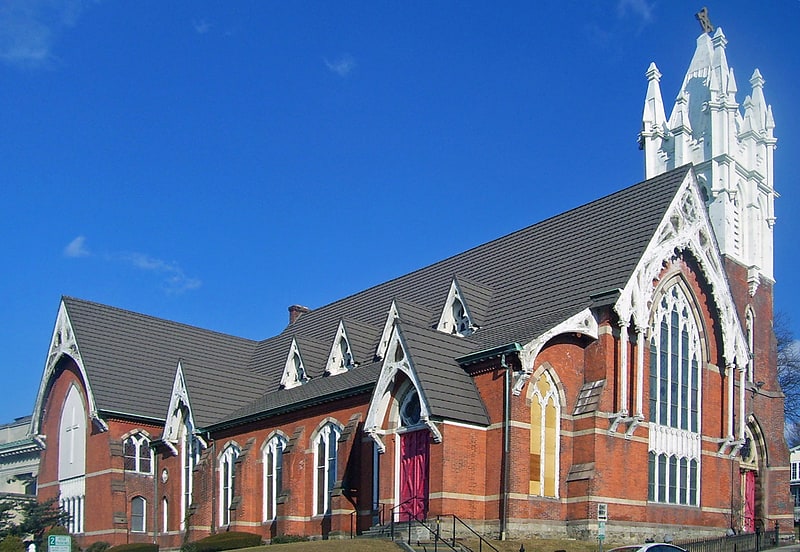
Building in Ossining, New York. The First Baptist Church of Ossining is located in the center of the village of Ossining, New York, United States. It is a brick building in the Gothic Revival architectural style with a tall wooden steeple built in the 1870s, one of Ossining's most prominent landmarks. In 1973 it was listed on the National Register of Historic Places. Sixteen years later, in 1989, it was included as a contributing property to the Downtown Ossining Historic District when it was listed on the Register.
First Baptist, begun in late 18th-century prayer meetings, is the oldest religious congregation in Ossining. Founder Elijah Hunter, who also established Ossining, began holding regular prayer meetings at his house in 1786. In the church's early years, masters and slaves held equal standing as congregants. The church was later instrumental in helping establish black churches in the area.[2]
Address: 34 S Highland Ave, 10562 Ossining
Teatown Lake Reservation
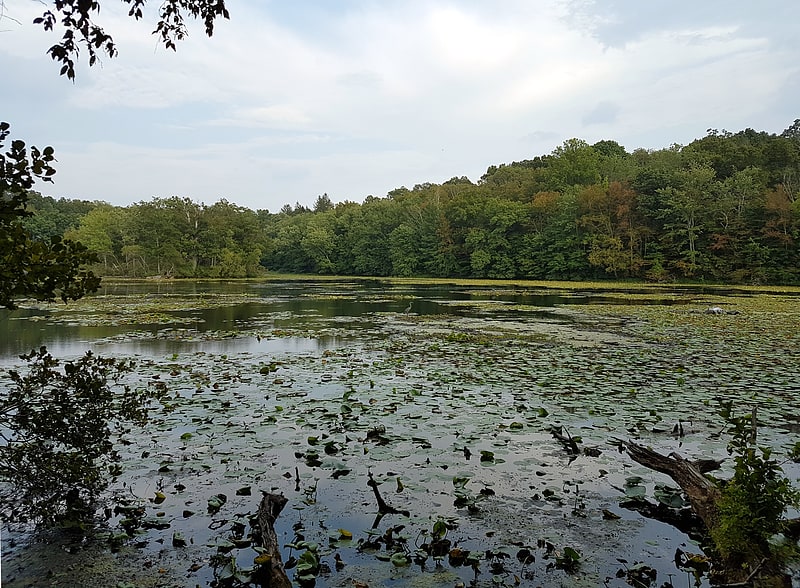
Nonprofit. Teatown Lake Reservation is a nonprofit nature preserve and environmental education center in Westchester County, New York, U.S. located in the towns of Ossining, Yorktown, Cortlandt, and New Castle. The reservation includes an 1,000-acre nature preserve and education center, visited annually by around 25,000 people.
Known by locals simply as "Teatown", the organization works to conserve biodiversity, teach ecology and promote nature-friendly living. Located in the Lower Hudson Valley's Hudson Highlands, Teatown Lake Reservation conserves open space, educates about the environment, sustaining the diversity of wildlife and plants.[3]
Address: 1600 Spring Valley Rd, 10562-1655 Ossining
Downtown Ossining Historic District
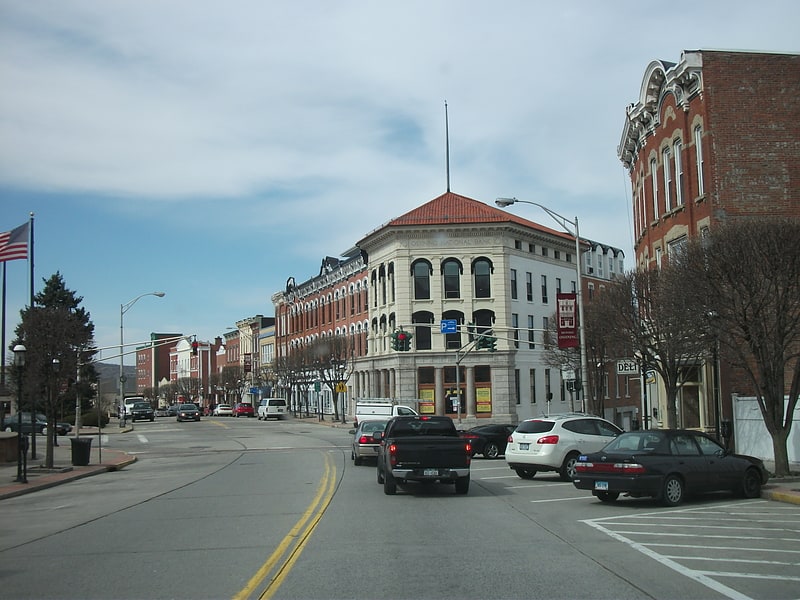
The Downtown Ossining Historic District is located at the central crossroads of Ossining, New York, United States, and the village's traditional business district known as the Crescent. Among its many late 19th- and early 20th-century commercial buildings are many of the village's major landmarks—three bank buildings, four churches, its village hall, former post office and high school. It was recognized as a historic district in 1989 and listed on the National Register of Historic Places, as one of the few downtowns in Westchester County with its social and historical development intact.
One of its contributing properties, the First Baptist Church of Ossining, was previously listed on the Register in 1973. The Old Croton Aqueduct, a portion of which passes through the district, was listed on the Register the following year and designated a National Historic Landmark in 1992. Among the architects represented in the district are Robert W. Gibson, Isaac G. Perry and James Gamble Rogers.
Ossining began developing at the crossroads in the late 18th century, and continued to prosper as industry, along with Sing Sing prison and the railroad, developed along the nearby shore of the Hudson River. It soon became Westchester's first incorporated village. The downtown area was fully developed by the mid-19th century, but two events later in the century reshaped it. The aqueduct was built through the area to carry water to New York City, requiring the demolition of some buildings. In the early 1870s several fires destroyed other buildings, thus most that remain date from that period to the early 1930s.
Later in the 20th century the buildings on the south side of Main Street were demolished as part of urban renewal efforts. Some of the oldest buildings on the other side were also lost in another fire. Little has been built to replace them, and the village has only recently begun serious redevelopment efforts although the area has become home to restaurants and home-furnishings stores that cater to the area's Latin American and Portuguese immigrant populations. A comprehensive plan adopted in the early 21st century has led to new zoning for the area meant to encourage mixed-use development. An expansion of the district to include Highland Cottage and some other buildings, also called for in the plan, was granted in 2013.[4]
Address: 95 Broadway, Ossining
Dale Cemetery
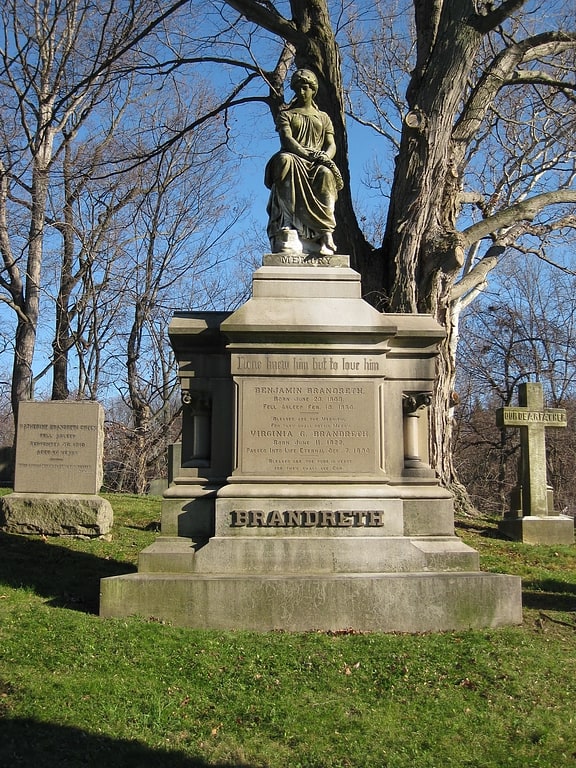
Cemetery in Ossining, New York. The Dale Cemetery located in Ossining, New York is a town-owned rural cemetery encompassing 47 acres and has been operational since October 1851. In 2013 it was listed on the National Register of Historic Places.[5]
Address: 104 Havell St, Ossining
Richard Austin House

Museum in Ossining, New York. The Richard Austin House is located on Croton Avenue in the village of Ossining, New York, United States. It is a wood frame structure dating to the 1870s. In 1989 it was added to the National Register of Historic Places.
At the time the house was built, Ossining was beginning its transition from a country town to a commuter suburb of New York City. The Austin House is one of the few from that period of the community's history to remain completely intact, both outside and in, although two extensions were added in the 20th century. It is currently the home of the Ossining Historical Society, which operates a museum in the building.[6]
Ossining
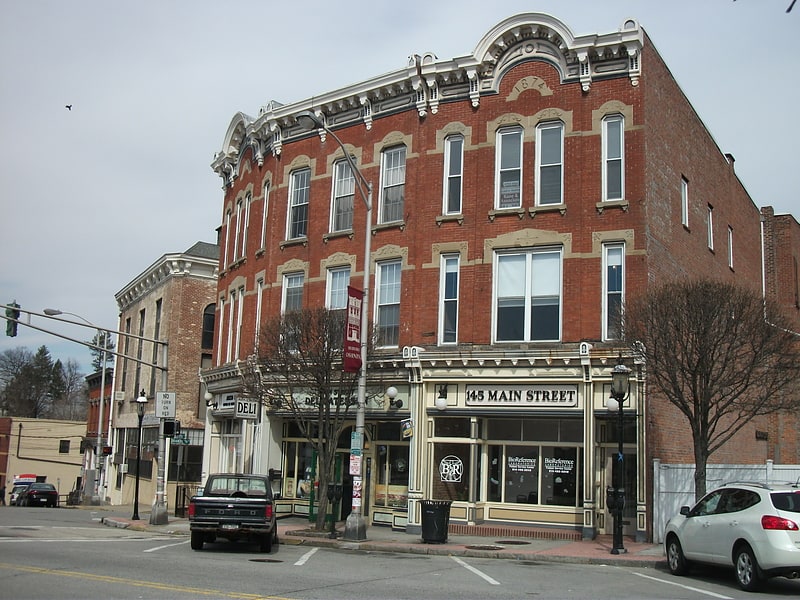
Village in New York State. Ossining is a village in Westchester County, New York, United States. The population was 25,060 at the 2010 census. As a village, it is located in the town of Ossining.[7]
Highland Cottage
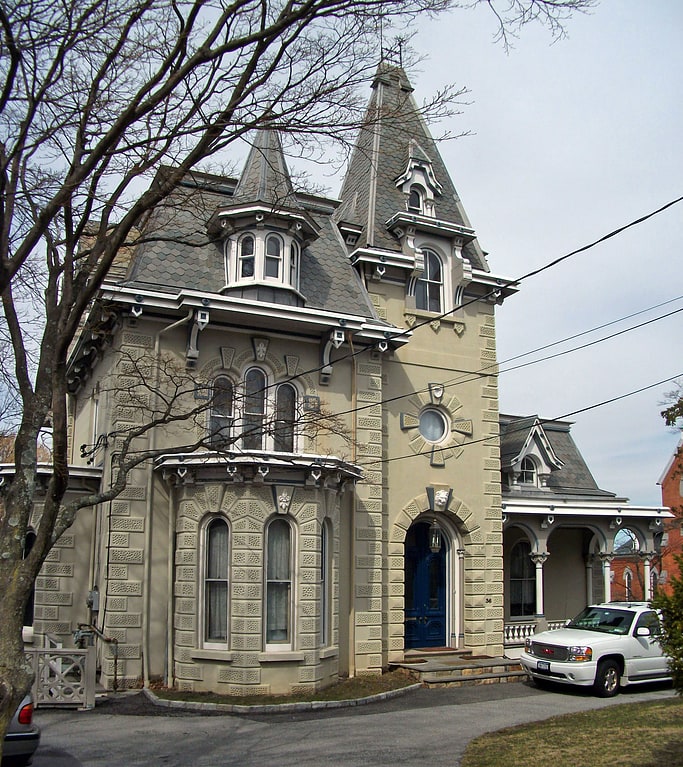
Highland Cottage, also known as Squire House, is located on South Highland Avenue in Ossining, New York, United States. It was the first concrete house in Westchester County, built in the 1870s in the Gothic Revival architectural style. In 1982 it was listed on the National Register of Historic Places; almost 30 years later, it was added to the nearby Downtown Ossining Historic District as a contributing property.
Built by a prominent local man with an interest in new construction techniques, it has seen several different uses over the years. It was a sanitarium in the early 20th century, then a hospital and later a restaurant. For most of that century, the Squire family ran a local business school there. Since then it has returned to residential use.[8]
Brandreth Pill Factory
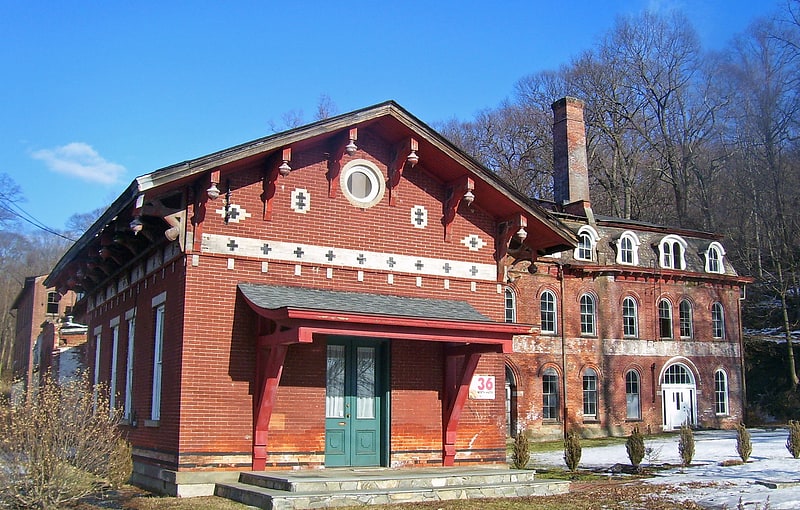
The former Brandreth Pill Factory is a historic industrial complex located on Water Street in Ossining, New York, United States. It consists of several brick buildings from the 19th century, in a variety of contemporary architectural styles. In 1980 it was listed on the National Register of Historic Places.
Most of the original buildings succumbed to fire in the 1870s, but the oldest, a Greek Revival building possibly designed by Calvin Pollard in the 1830s, remains. Nearby is a corrugated iron structure that may be the earliest use of that material in Westchester County. The main building itself was one of the first to have Otis elevators installed.
Benjamin Brandreth made his family's popular medicine, said to treat blood impurities, at the factory, starting in the 1830s. The factory's construction was the beginning of the industrial development of the Ossining waterfront. It continued to be used for manufacturing until the 1940s. Some of the smaller buildings remain in use today, although the former main building is vacant.
The village had been considering a proposal to convert the main factory building to green housing. After a proposal to do so failed to gain approval, due in part to flooding concerns in the wake of Hurricane Sandy in 2012, the owners demolished part of the building in 2015. The village claimed it was illegal as the permit had expired; the owners claimed otherwise.[9]